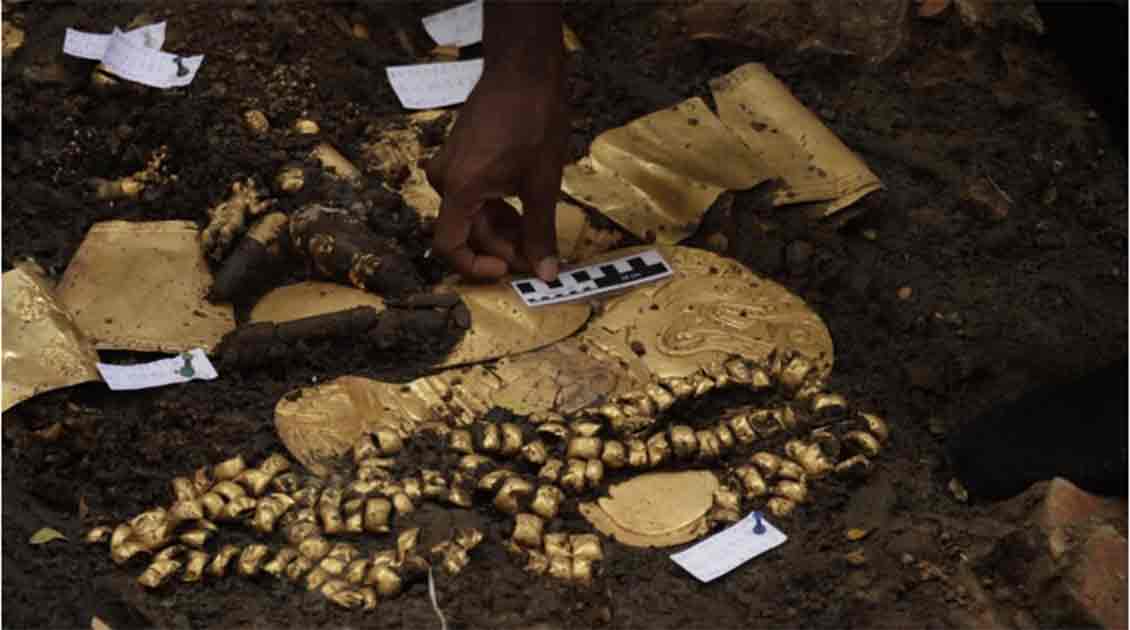- Feb 2, 2013
- 1,538
- 2,196
- Detector(s) used
- Many
- Primary Interest:
- All Treasure Hunting
Archaeologists have uncovered the incredible gold-filled tomb of a Coclé lord, filled with pre-Hispanic historical treasures, in Panama's El Caño Archaeological Park.
For gold lovers, it doesn’t get much better than this discovery at the archaeological park of El Caño in Panama. Archaeologists have unveiled the tomb of an esteemed Coclé lord from the pre-Hispanic era. This spectacular find, brimming with golden artifacts, marks a pivotal moment in understanding the region's ancient history.
Cultural Preservation Project Finds Lord’s Tomb:
The excavation identified as Tomb No. 9, is part of a comprehensive archaeological project led by the El Caño Foundation in collaboration with Panama's Ministry of Culture (MiCultura), at El Caño Archaeological Park, located in the district of Natá, province of Coclé.
According to Linette Montenegro, national director of Heritage at MiCultura, this initiative is a part of a long-term effort that kicked off in the dry season of 2022, funded through the “Cultural Cooperation Agreement No. 025-2021” between MiCultura and the El Caño Foundation.
Montenegro highlighted that importance of the find is not only that the tomb contained ceramics and gold artifacts, significant to the funerary customs of the time, but that these items hold "incalculable historical and cultural value."
The unearthed treasures include five pectoral plates, gold bead belts, bracelets, and earrings shaped like human figures, among other precious items.

 www.ancient-origins.net
www.ancient-origins.net
For gold lovers, it doesn’t get much better than this discovery at the archaeological park of El Caño in Panama. Archaeologists have unveiled the tomb of an esteemed Coclé lord from the pre-Hispanic era. This spectacular find, brimming with golden artifacts, marks a pivotal moment in understanding the region's ancient history.
Cultural Preservation Project Finds Lord’s Tomb:
The excavation identified as Tomb No. 9, is part of a comprehensive archaeological project led by the El Caño Foundation in collaboration with Panama's Ministry of Culture (MiCultura), at El Caño Archaeological Park, located in the district of Natá, province of Coclé.
According to Linette Montenegro, national director of Heritage at MiCultura, this initiative is a part of a long-term effort that kicked off in the dry season of 2022, funded through the “Cultural Cooperation Agreement No. 025-2021” between MiCultura and the El Caño Foundation.
Montenegro highlighted that importance of the find is not only that the tomb contained ceramics and gold artifacts, significant to the funerary customs of the time, but that these items hold "incalculable historical and cultural value."
The unearthed treasures include five pectoral plates, gold bead belts, bracelets, and earrings shaped like human figures, among other precious items.

Gold-Filled Tomb of Pre-Hispanic Lord Unearthed in Panama
For gold lovers, it doesn’t get much better than this discovery at the archaeological park of El Caño in Panama. Archaeologists have unveiled the tomb of an esteemed Coclé lord from the pre-Hispanic era.



